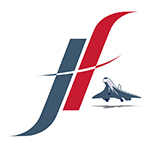Uh-oh! – This runway is nothing like I imagined, at all…
Uh-oh! – This runway is nothing like I imagined, at all…
You’ve just learned to fly and proudly earned your PPL or CPL. Your home airfield was wide and flat : ‘Aren’t they all?’ Well, actually, not necessarily. The main runways may have been 30m, 45m or even 60m wide, sealed and painted with centreline and other markings : or, perhaps, the sealed runway(s) were narrower at 18m, or were just airstrips with gravel or grass landing surfaces.
Sooner or later, you will fly to an airfield with varying characteristics and you’ll notice some marked differences. For starters, the airfield elevation may or may not be close to Mean Sea Level, which will affect airplane performance. It may be in a closely built-up, highly populated city or it may lie in a regional area, with plenty of open space surrounding; or in a desert or high country area.
The runways (or airstrips) could differ markedly from your home airfield and may be more uphill / downhill / undulating / longer / shorter / narrower / wider / sealed / unsealed / lighter-coloured / darker-coloured than the ones you are used to. And, from my observations of many years, they can be quite confusing to deal with, for pilots at any level of experience.
These variations are a fact of life and must be accommodated, despite some very real visual illusions that can and do occur when approaching to land – especially at night. Up-/down-sloping runways need earlier/later flare commencement points, respectively, (exactly the same issues as approaching at too high/too low an approach path angle).
Runways that are wider/narrower than those familiar to us cause height illusions that can cause pilots to flare too early/too late, respectively.
Even landing with a lesser or greater flap angle can affect pilot judgment, due to the different airplane body angle. In larger aircraft, this becomes significant, due to the greater change in the height relationship between the pilots’ eye position and the relatively well-aft main landing gear.
All of these issues are well-documented, but the conventional solutions are varied and widely left to pilot judgment and experience. This situation has never been good enough, because inconsistent judgment distracts and distorts from the main task: flying a precise visual eye path approach to a defined aiming point, suitably determined to suit the airplane size.
The Jacobson Flare explains how all of these issues are geometrically self-compensated, most of them automatically, just by using our innovative longitudinal flare initiation point, rather than a conventional educated ‘guess’ of flare height. It’s that simple.
Wishing you many safe landings
Captain David M Jacobson FRAeS MAP
Would you care to experience that unsurpassed sense of accomplishment, derived from executing consistently beautiful landings, more often?
For starters, Download the FREE Jacobson Flare LITE, our no fuss/no frills introduction. Here we demonstrate, step by step, the application of the Jacobson Flare on a typical grass airstrip at Porepunkah, YPOK.
We invite you to browse the consistently positive comments on our Testimonials page. Many pilots, of all levels of experience, have downloaded our Apps. Read about their own experiences with the Jacobson Flare technique and the App.
Then download the COMPLETE Jacobson Flare app – for iOS. You’re already possibly paying $300+/hour to hire an aeroplane: You’ll recover the cost of the app, in just ONE LESS-NEEDED CIRCUIT. Moreover, you’ll have an invaluable reference tool, throughout your entire life in aviation.
Download the COMPLETE Jacobson Flare App for iOS devices now.
We invite you, also, to review our new, FREE companion app,
offering a convenient way of staying abreast of our latest blogs.
Download the Jacobson Flare NEWS App for iOS devices now.


